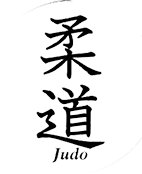lperro wrote:
just for uki otoshi and kata guruma: i tried my best and, at my current understanding of kata, that pattern of execution is the better i found even with HEAVY ukes (90+) while the canonical is pretty impossible (i mean the uki otoshi with uke falling like a "nage" throw) or it's dangerous (the static pause in kata guruma) with a much heavier uke.
What do you think?
I look at Kata like geometry. One can mathematically conceive of a perfect circle, but it is physically Impossible to draw or construct one due to the limitations of the tools and equipment used. One call always find roughness or ovality or irregularities if one continues to increase the magnification of inspection or precision of measurement. Kata is the same, its never perfect and never quite the same, but we strive to approach an ideal representation nevertheless. I think we deviate from that ideal at our peril as we risk missing the lessons we should be learning.
No disrespect intended to you or your sensei. It is difficult when looking at a presentation to whether the errors present are those of the participants or if there have been errors in instruction. I often wonder at some of the presentations I have seen online, where errors I would have insisted students correct on day 1 of practice, have somehow survived to the final presentation at an exam. In your case, I think further study is warranted but I have seen much worse.
For Uki Otoshi, I can't see how the execution presented is any improvement over the standard execution, regardless of uke's size. What I would call a barrel-roll fall is non-standard in judo and is potentially dangerous to uke if he's accustomed to standard ukemi. I don't see how the standard form is impossible if we've been executing it for about a hundred years. A key part is the control of uke's eri with your tsurite. This needs to draw uke forward rather than push him aside, which will keep the throw along the intended line. Learning to do this correctly will benefit many other waza where this is also important.
For kata guruma, your method of execution places you in a hunched forward position, so that you are supporting uke's weight in a cantilever manner which is prone to straining the lower back. The standard execution keeps the spinal column in the same plane with uke's mass and tori's supporting legs, so the strain on tori's back is minimized, when done correctly. The static pause, far from being dangerous, is moment when uke's mass is in perfect balance over tori's shoulders, so that tori's spine is aligned and under minimal strain. Uke should be as safe as a baby in a cradle at that moment. The subsequent throw, while high, is not particularly hard. It is a matter of tori's control. Tori lowers one shoulder and raises the opposite arm to unload uke, tori's hands apply a counter-tension to control the fall like in any throw. I do recall on my shodan exam many years ago, I was criticized for not throwing uke
hard enough, such was my concern for uke's welfare. This despite uke being thrown from the full standard elevation. (Admittedly, I'm not that tall, but my son is and no problems for his uke either.)
Anyway, I hope not to get into a lengthy debate about each of the fine points. Those are my observations, such as they are. Better to bring it up with your own instructors when the chance arises. For myself, I'm not shy about speaking up at clinics when anything doesn't match my preconceived notions. I have found, that as I have progressed, less and less surprises me at clinics given by good instructors.
I am still curious as to the Italian grading board's comments. Did they match what I have said at all? Likewise with your instructors, what do they think?
I'm always curious if we're all on the same page or if there are widely different opinions out there.




 )
)